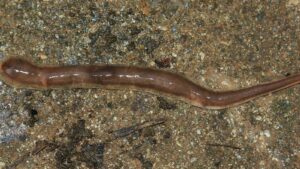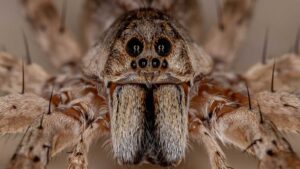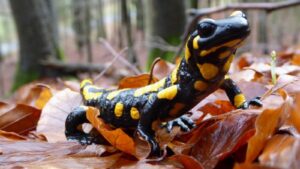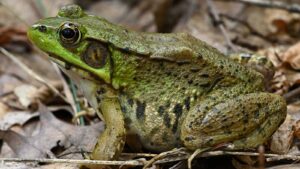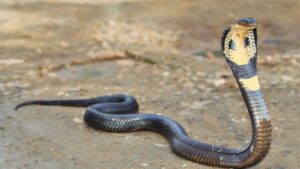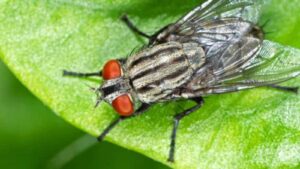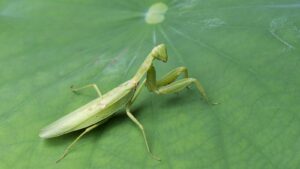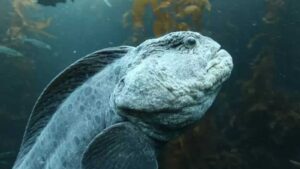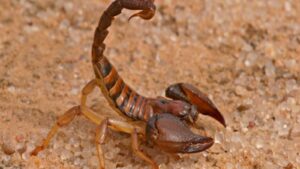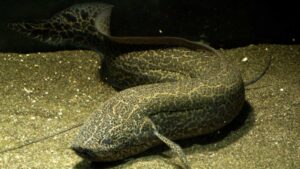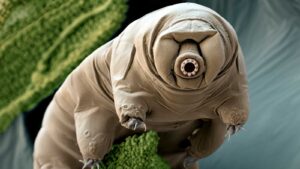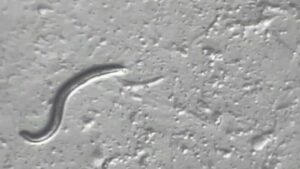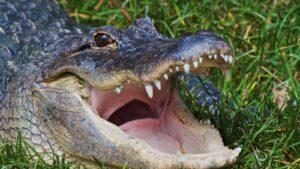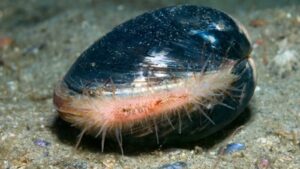Top 20 animals that can live after death
Summary
Top 20 animals that can live after death . Have you ever imagined being alive even after death? Well, a few animals are fortunate enough to experience life even after death. Humans adore immortality, yet we can never achieve it. […]

Top 20 animals that can live after death . Have you ever imagined being alive even after death? Well, a few animals are fortunate enough to experience life even after death. Humans adore immortality, yet we can never achieve it. A few of the animals have been living their dreams, from totally frozen bodies and chopped-off body parts to surviving nuclear bombs. Let’s look at the top 20 animals that can live after death.
Video: Top 20 animals that can live after death
Cockroaches
It shouldn’t be a surprise when these tiny little bugs top this list. Cockroaches are infamous for their tenacity and thought to be the most unlikely survivors of a nuclear war. Some claim they can live without their heads. Surprise, surprise, cockroaches can live without their heads for weeks. When decapitated, they don’t bleed like humans. Courtesy of their open circulatory system, their wound naturally closes due to clotting. Headless cockroaches breathe through little holes located on their bodies called’spiracles’ but may eventually die of starvation.
Video: Top 20 animals that can live after death
Flatworms
An old wise saying of how earthworms reproduce says if you cut it in half, two earthworms are produced. Substitute earthworms with flatworms, and this theory becomes true. Flatworms are regeneration masters; after amputation, they rebuild body parts. If one is cut in half, the head portion grows a tail, and the tail portion grows ahead. Cut it into 20 pieces, and 20 new worms are created similar to the original. University scientists have exploited this and created a colony of over 20,000worms, and guess what? They’re all from one original whose organs do not appear to age.
Chickens
Stop running around like a headless chicken! Ask any farmer, and they will tell you this is true. These amazing animals can still run around with their heads cut off, not because they are zombies, but because of human error. Chickens central nervous system is very different from humans, and some basic body functions are controlled by certain brain parts, so if a butcher chops its head too high, it’s just the forebrain. He misses the jugular so the chicken can move and breathe like one special chicken that survived 18 months without its head.
Turtles
The hearts of fish, mammals, reptiles, and birds have like their pacemaker cells; they tick over when their brainstem signals aren’t coming through, ensuring the heart functions for a while when the brain doesn’t. These animals that can live even after death can dive for long—how long? Well, try 5000 hours for the loggerhead sea turtle; yeah, that was 5 and three zeros, and they survive that long on oxygen taken from water through their skin. While their bodies produce energy without oxygen, their hearts have fuel sacks, and they won’t give up until it’s used up.
Octopus
Have you seen online videos of octopus moving after being chopped off? In certain countries, eating a fresh octopus is a deadly delicacy. The octopus arms continue moving and get stuck in one’s throat, resulting in a bad day. The reason for their mobility after being chopped off is because their nervous system is unique and 2/3 of their nerve cells are in the tentacles. Hence, they continue being responsive to stimuli even if they are not connected to the brain. Researchers at St. Georges University in London also researched this phenomenon.
Spiders
Did you know spiders have two penis located closer to their faces? Hah, so where do you expect the genitals to be? Isn’t it interesting to know that the male spades have the worst sex life in the animal kingdom? Females determine the duration of the act and can terminate it anytime. So the males came up with a revenge plan; during intercourse, they break up the pedipalps pumping sperm into the females even if they aren’t attached to it. Worse still, a new male will receive nothing but these penis’s when it mates with the female.
Salamander
You will be hard-pressed to include salamander on your list of animals that can live after death. It’s synonymous with long life and immortality, and magicians believe that its ability to regenerate its body part is paranormal. Salamanders have the uncanny ability to regenerate any chopped part of their body courtesy of a special protein that replicates cells. The regrown parts can function the same or better than the original parts. A small amount of this protein is found in humans and helps in wound healing. Can we also regenerate several limbs? Well, scientists are still studying that!
Frogs
This to you may sound like an insane animal, the frog. It’s been discovered that frogs move even with their brain dead—to be precise, ‘with their brain missing’. This experiment was reported when scientists discovered reports of headless animals continuously moving, and it was very impressive. But what the hell happens when you remove the frog’s brain and leave the body intact? Well, thanks to the ‘let’s chop out its brain and see what happens approach taken by scientist David Fareriel, a brainless frog behaves similar to one with brains; it can swim and turn in different directions.
Snakes
Our best pick: terrifying animals, ferocious; it can kill you even with its head chopped off! People react differently when they encounter highly venomous snakes: running away, throwing things, or killing them. Chopping off their heads may be a peaceful way to avoid being bitten, but the truth is that’s not the case. A snake’s head, a vessel for its fangs and deadly poison sacks, can still bite you, delivering deadly venom even when detached from the body. It detects threats with heat-sensitive pits on both sides of its face hours after its death, defending itself, zombie style
Bees
This might sound like a cop-out to you. No, bees die and stay dead. However, these creatures that live after death appear on this list because even though bees die, they can still sting you, of course not the way you think. Dead bees won’t fly to sting you, but long after they’re dead, the stinging part and the venom delivery system stay active. When it stings, the sting detaches from its body and embeds into the victim’s body. A bee’s action is controlled by involuntary impulses, so if you thought you’re safe picking up a dead bee, think again!
Read More: 20 Things Most Humans Can’t Do
Flies
David Blaine brings dead flies to life, yes, but it’s not because he has supernatural powers. Flies can survive freezing temperatures and even go into some kind of suspended animation. This ability to withstand freezing temperatures is not why the humble fly makes it on this list. After decapitation, female flies can live for several days; such beheaded females can also assume upright stands, and they can do and engage in complex actions like flying and, under duress, walking. Amazingly, incapacitated females can be courted. Oh yes, chop off a female flies head, and nothing changes really.
Praying mantis
Surely love can break your heart, but if you are a male praying mantis, it can literally eat you alive. During mating, the female bites off his head, but as decapitation doesn’t affect their ability to fertilize, some even get their heads consumed before the act. These animals that can live after death are highly exposed to sexual cannibalism. After mating, the female stores the male’s sperm and later uses it to fertilize the eggs that she produces. Sometimes she may even devour the male’s decapitated body for nourishment.
Wolf eel
Unlike its name, wolf eel is actually a fish, not an eel. Because of its elongated shape, this wolfish species living in the northern Pacific is always mistaken to be an eel. Its head can bite you even if it’s cut off from the body. The reason for its ability to bite after decapitation is because it’s a cold-water species animal that lives in ice! The cold temperatures allow tissues like the brain, nerves, and muscles to survive longer before dying of lack of oxygen. Therefore, decapitation doesn’t harm the reflex from the brain to the mouth.
Scorpions
The longest time humans can go without eating is a month on average, but scorpions can slow down their metabolism to the point of surviving on a single insect for an entire year. They’re masters of adapting; perhaps that’s why they do survive hundreds of millions of years. They can live in most temperatures and environments; in fact, a scorpion was even frozen before and came back to life walking away as nothing had ever happened and without any injuries. This must be one of the animals that live in ice.
The lungfish
Humans need daily food and water to survive, unlike some amazing animals that live after death. The lungfish inhabits Africa, South America, and Australia. It lives in mucky margins of swamps and rivers and sometimes during droughts; it can go for long years without food and water. During this time, the lungfish temporarily shuts down the systems and remains in suspended animation. It is a true underground survivalist. Scientists are studying the animal with hopes of advancing in medicine and space travel.
Jellyfish
Could it be because of this jellyfish that people still search for the mythical fountain of youth? This jellyfish is an immortal animal; it has its way of living young forever. Medusa are magical animals with complex patterns that look alien, and only a few reach immortality. They reverse completely to an immature state after reproduction. They also keep themselves from dying, and when they get injured, they undergo a reverse aging process that brings them back to their polyp stage, starting all over again with younger cells. If only we could do that too, MH.
The tardigrade
Also known as the water bear, these microscopic, strange animals from the depths of the ocean can survive in temperatures as low as -20 degrees for decades and as high as 150 degrees Celsius and come out alive. They can endure volcanic thermal burns at the bottom of the ocean and survive in space radiation as well. This cute little animal truly lasts us all. While you and I will be long gone, the species of this seemingly immortal and most powerful animal on earth will continue to live somewhere in the universe.
Siberian permafrost worms
Found in Siberia are these nematodes that are such a pro at not kicking the bucket. The permafrost nematodes were found frozen for 42,000 years. They are similar to worms but much smaller. These craziest animals that live after death are only 1 mm in length and can live almost a mile below the surface. When scientists towed out the worms, they came back to life and started moving around and even resumed normal eating. Have these worms been waiting for millennia just to wake up and make the appearance again?
The alligator
Alligators enjoy living in tropical regions. But how do these guys with a deadly bite survive for long in the winter months when snow hits without calling? While animals like bears go into hibernation, alligators have their strategy. At just the right moment, before water freezes, they stick out their snout out of the water, and the water freezes around it as they breathe up in the air with their noses. They get into the state of brumation, and as temperatures drop, they get more lethargic to save up their energy until winter is over, and they resume a normal life.
Read More: Terrifying Experiments: Human-Animal Hybrid Results
Ocean quahog
The ocean quahog is a species of edible clam native to the northern Atlantic Ocean. This insane animal is part of a delicacy in most of the countries they live in. They can live much longer than expected. When scientists accidentally killed one in Iceland, they studied it inside and noticed it was 507 years old. This animal can live this long because, unlike other animals whose oxygen molecules react with cell membranes and produce molecules that damage cells, its cell membranes have resistance to this oxidative stress and do not deteriorate at all, allowing them to live far beyond other creatures and even after death.
Which of these animals fascinated you the most? Have you encountered these types of animals before? Let us know in the comments box below.

